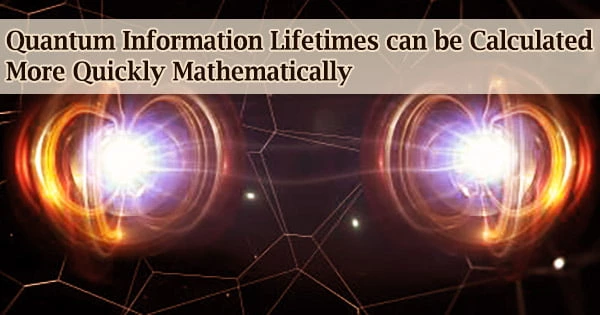Scientists can quickly calculate the quantum information lifetime of 12,000 distinct materials using a new, straightforward equation. A crucial aspect of quantum devices can now be calculated more quickly thanks to a mathematical trick discovered by researchers.
Researchers have released a new equation for roughly calculating the “coherence time,” or the amount of time the materials can maintain quantum information, after crunching the data on the quantum properties of 12,000 elements and compounds.
Instead of taking hours or weeks to obtain an accurate value, the straightforward technique enables scientists to estimate the materials’ coherence durations instantly.
The team, which included researchers from the University of Chicago, the Department of Energy’s (DOE) Argonne National Laboratory, Tohoku University in Japan, and Ajou University in Korea, published their findings in the Proceedings of the National Academy of Sciences in April.
Their study is supported by the Center for Novel Pathways to Quantum Coherence in Materials, a DOE National Quantum Information Science Research Center led by Argonne, and by Q-NEXT, a DOE Energy Frontier Research Center financed by the Department of Energy.
The equation developed by the team is applicable to a certain class of materials those that can be utilized to create spin qubits.
“People have had to rely on complicated codes and calculations to predict spin qubit coherence times. But now people can compute the prediction by themselves instantaneously,” said study co-author Shun Kanai of Tohoku University. “This opens opportunities for researchers to find the next generation of qubit materials by themselves.”
The fundamental building block of quantum information, or the quantum equivalent of computer bits, are called qubits. They occur in a variety of shapes and sizes, such as the spin qubit. All atomic and subatomic matter, including electrons, atoms, and groups of atoms, have the quantum property of spin, which a spin qubit stores data in.
Researchers anticipate that quantum technology will be able to enhance our daily lives. Quantum simulations could be used to speed up drug delivery, and we could be able to convey information via networks that are impenetrable to hackers.
It will be necessary to have qubits with stable enough coherence times to store, process, and transfer the data before this potential can be fully realized. Although the study team’s equation only provides a rough estimation of a material’s coherence time, it is fairly accurate.
The equation is like a lens. It tells you, ‘Look here, look at this material it looks promising.’ We are after new qubit platforms, new materials. Identifying mathematical relationships like this one points out new materials to try, to combine.
Professor Giulia Galli
And the equation makes up for its lack of accuracy with ease of use. To get a solution, all that is needed are five numbers representing the values of five distinct attributes of the substance in issue. Voila! Just plug them in. You may now enjoy some coherence.
The best-known materials for housing spin qubits at the moment are diamond and silicon carbide. Now researchers don’t have to spend days deciding whether a substance is worthwhile of further investigation.
“The equation is like a lens. It tells you, ‘Look here, look at this material it looks promising,’” said University of Chicago Professor and Argonne senior scientist Giulia Galli, a co-author of the study and Q-NEXT collaborator. ? “We are after new qubit platforms, new materials. Identifying mathematical relationships like this one points out new materials to try, to combine.”
The researchers want to improve the accuracy of their model by using this equation. Additionally, they will make connections with scientists who can develop the materials with the fastest coherence times and test them to see if they perform as the equation predicts.
(The team has marked one success already: A scientist outside the team reported that the relatively long coherence time of a material called calcium tungstate performed as predicted by the team’s formula.)
“Our results help us with advancing current quantum information technology, but that’s not all,” said Tohoku University Professor Hideo Ohno, who is currently president of the university and paper co-author.
“It will unlock new possibilities by bridging the quantum technology with a variety of conventional systems, allowing us to make even greater progress with the materials we’re already familiar with. We’re pushing more than one scientific frontier.”
This work was supported by the Center for Novel Pathways to Quantum Coherence in Materials, an Energy Frontier Research Center funded by the U.S. Department of Energy, Office of Science, Basic Energy Sciences, in collaboration with the U.S. Department of Energy Office of Science National Quantum Information Science Research Centers.





